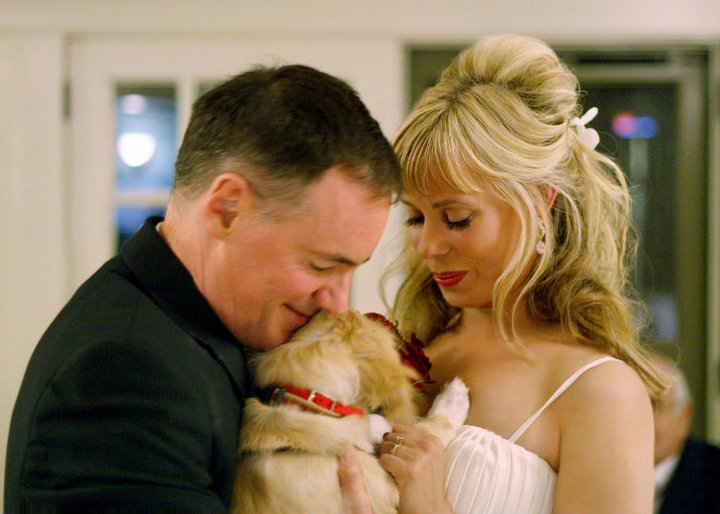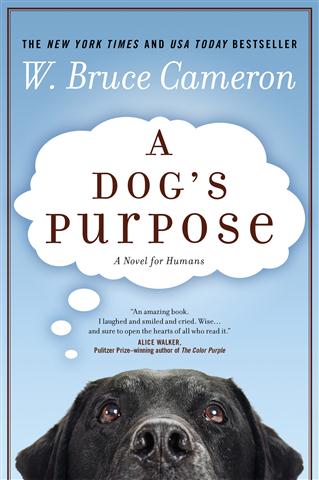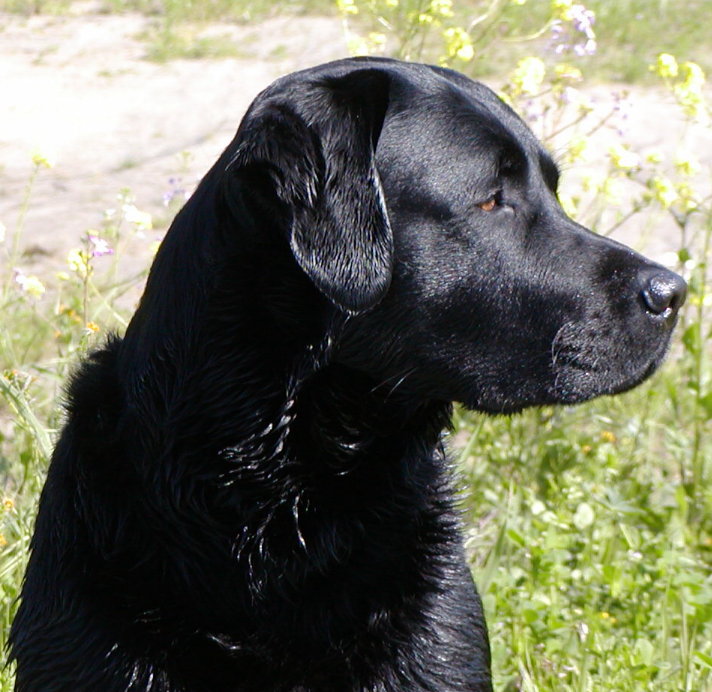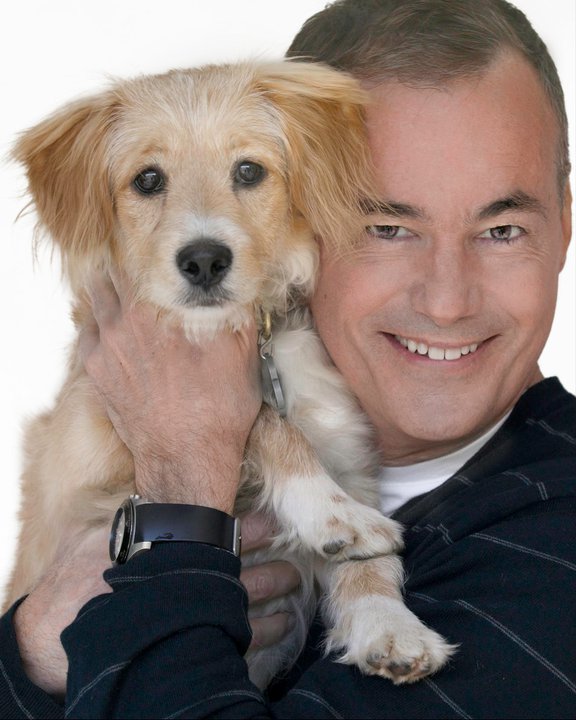 W. Bruce Cameron is the author of 8 Simple Rules for Dating My Teenage Daughter, which was turned into the hit ABC series starring the late John Ritter; 8 Simple Rules for Marrying My Daughter; and How to Remodel a Man. He has twice received the National Society of Newspaper Columnists award for Best Humor Columnist and was recently named Columnist of the Year by the NSNC. His nationally syndicated column is published in more than 50 newspapers. Cameron's fiction debut, A Dog's Purpose (Forge Books), is a New York Times, USA Today and Los Angeles Times bestseller and is soon to be a live-action film from DreamWorks Studios. Cameron's second novel, Emory's Gift, will be released by Forge Books in September 2011.
W. Bruce Cameron is the author of 8 Simple Rules for Dating My Teenage Daughter, which was turned into the hit ABC series starring the late John Ritter; 8 Simple Rules for Marrying My Daughter; and How to Remodel a Man. He has twice received the National Society of Newspaper Columnists award for Best Humor Columnist and was recently named Columnist of the Year by the NSNC. His nationally syndicated column is published in more than 50 newspapers. Cameron's fiction debut, A Dog's Purpose (Forge Books), is a New York Times, USA Today and Los Angeles Times bestseller and is soon to be a live-action film from DreamWorks Studios. Cameron's second novel, Emory's Gift, will be released by Forge Books in September 2011.
On your nightstand now:
I was lucky enough to be sent an advanced copy of Families and Other Nonreturnable Gifts by Claire LaZebnik. That's what happens when you sell a lot of copies of your book, people start sending you novels for free. It's really cool.
Claire's latest deals with a nutty family gone nuclear meltdown. It's about how we all think our families are crazy and that we need to escape them, but ultimately we are them, and they are us. There's a story arc concerning a 50+ mother hitting the dating scene (much to the distress of her grown children) that I think will really resonate with readers.
Favorite book when you were a child:
I'd have to say The City Boy by Herman Wouk. It was the first "adult" book I read--meaning there were chapters and no pictures and none of the words rhymed. I was in third grade. I was so taken by the plight of the boy, Herbie Bookbinder, though his plight was really just that he was a boy, which I already had figured out wasn't always going to be easy.
Your top five authors:
The last time I tried to name my top five favorite authors I gave up at 50. I'm going to be honest, though, instead of dredging up 14th-century French poets so that I'll appear smart.
Currently, Michael Connelly would have to be on the list because he's writing maybe two books a year and, man, can he ever structure a story. Kazuo Ishiguro is a master at weaving a tale made fascinating and often suspenseful based purely on his astounding ability to capture characters. Elmore Leonard has written what, two billion novels? They are every single one of them an enjoyable read. Temple Grandin's books should be read by everyone who likes animals, has animals, or has seen pictures of animals. And my all-time favorite author is Cathryn Michon, who wrote the Grrl Genius series of books--I like her so much I married her. This list probably would change every time you asked me, but Cathryn would always be on it.
Book you're an evangelist for:
Innocent by Scott Turow. I know it is a bestseller but in my opinion it deserves to be a huge bestseller, read by everyone. Even more fun if you go back and read the first one, Presumed Innocent, before plunging into this one.
Book you've bought for the cover:
Love Wins by Rob Bell, because the subtitle says "A Book About Heaven, Hell, and the Fate of Every Person who Ever Lived." I thought if this guy can cover that much in just 200 pages, he can teach me a lot about structure!
Book that changed your life:
I read The Caine Mutiny by Herman Wouk in fourth grade and also flunked reading that same year. It turned out that I wasn't very good at reading kids' stories and answering questions about them because my handwriting was painfully slow to hit the paper. My mother petitioned to have the grade raised because I clearly wasn't an "F" reader, and the teacher refused. I realized then and there that my relationship with books was going to set me apart from other children--I wanted to read and read, and the more books like The Caine Mutiny, the better.
Favorite line from a book:
"Call me Ishmael." I took a class one semester in college called "Moby Dick." I assumed that we'd read a spectrum of Melville, but no, we read one book, dissecting virtually every word, writing whole papers on one paragraph. The final exam was, to my recollection, limited to one question: Please write down, word-for-word, the novel Moby Dick.
That opening line of Moby Dick still evokes in me a sense that things may not turn out the way you think they will.
Book you most want to read again for the first time:
Dandelion Wine by Ray Bradbury--the first time I read it, I thought I'd stumbled upon the perfect novel, and I immediately read it again.
Trends in current literature that either surprise you or trouble you:
I look at the popularity of YA novels--Harry Potter, the Hunger Games series, etc.--and wonder why more authors don't write books that can be read by the whole family, why we have to employ a whole separate category to keep young readers segregated. There's nothing wrong with adult-themed books--I read them all the time--but often I'll remember that fourth grader reading The Caine Mutiny, and ruefully reflect that there just aren't that many novelists confident enough in their work to avoid shoving gratuitous sex, language and violence into a few scenes just to make sure adults are titillated.
photo: Juliet Norris-Clay







 After spending 19 weeks on the New York Times bestseller list, A Dog's Purpose--the marvelous novel by W. Bruce Cameron--is now available in paperback. It has received raves from such disparate fans as Rachel Ray, Alice Walker and Temple Grandin--and my favorite, from Maya, age 12: "Everyone will love A Dog's Purpose, it's a happy dead dog book!" It's sweet, it's heartbreaking, it's funny, but thankfully it's not cute. Cameron (8 Simple Rules for Marrying My Daughter) has more on his mind than cute; primarily, how dogs think and what motivates them. Seen through the eyes of a dog in four incarnations--Toby, Bailey, Ellie and Buddy--Cameron takes on life's big questions: Who am I? Where am I going? Why am I here?
After spending 19 weeks on the New York Times bestseller list, A Dog's Purpose--the marvelous novel by W. Bruce Cameron--is now available in paperback. It has received raves from such disparate fans as Rachel Ray, Alice Walker and Temple Grandin--and my favorite, from Maya, age 12: "Everyone will love A Dog's Purpose, it's a happy dead dog book!" It's sweet, it's heartbreaking, it's funny, but thankfully it's not cute. Cameron (8 Simple Rules for Marrying My Daughter) has more on his mind than cute; primarily, how dogs think and what motivates them. Seen through the eyes of a dog in four incarnations--Toby, Bailey, Ellie and Buddy--Cameron takes on life's big questions: Who am I? Where am I going? Why am I here? The dog's first memory comes shortly after his birth, when he figures out the warm smelly things squirming around next to him are his sister and two brothers, and "the large and beautiful shape with the long wonderful tongue was my mother." They live a feral life, spending most of their time hiding and looking for food. One day they are caught by men who take them to a compound, owned by Senora, filled with other dogs. He is named Toby, and loves his new world with playmates and toys and good food. But one day all the dogs are taken by the authorities to a shelter, where Toby is put to sleep. As he sinks into slumber, "the sadness I'd felt from Senora washed through me, and I wanted to squirm up to her and lick her palms and make her happy again. Of all the things I'd ever done, making Senora laugh seemed the most important. It was, I reflected, the only thing that gave my life purpose."
The dog's first memory comes shortly after his birth, when he figures out the warm smelly things squirming around next to him are his sister and two brothers, and "the large and beautiful shape with the long wonderful tongue was my mother." They live a feral life, spending most of their time hiding and looking for food. One day they are caught by men who take them to a compound, owned by Senora, filled with other dogs. He is named Toby, and loves his new world with playmates and toys and good food. But one day all the dogs are taken by the authorities to a shelter, where Toby is put to sleep. As he sinks into slumber, "the sadness I'd felt from Senora washed through me, and I wanted to squirm up to her and lick her palms and make her happy again. Of all the things I'd ever done, making Senora laugh seemed the most important. It was, I reflected, the only thing that gave my life purpose."

 Bruce Cameron has written an amazing book. In writing about animals, there is so much potential for sappiness and sentimentality, which he nimbly avoids; instead, A Dog's Purpose is imbued with gentle wit, dignity, sadness and love. Cameron makes us feel the magic of the dog-human bond: "There simply was no better feeling in the world than to be hugged by my boy." If a dog's purpose is to love humans and teach them how to love unconditionally; if love is a verb, then Toby, Bailey, Ellie and Buddy are truly guide dogs in action.
Bruce Cameron has written an amazing book. In writing about animals, there is so much potential for sappiness and sentimentality, which he nimbly avoids; instead, A Dog's Purpose is imbued with gentle wit, dignity, sadness and love. Cameron makes us feel the magic of the dog-human bond: "There simply was no better feeling in the world than to be hugged by my boy." If a dog's purpose is to love humans and teach them how to love unconditionally; if love is a verb, then Toby, Bailey, Ellie and Buddy are truly guide dogs in action. 
 Until last year, W. Bruce Cameron was probably best known as the author of 8 Simple Rules for Dating My Teenage Daughter, which became the basis for a popular sitcom starring John Ritter in his last television role. Now, after nearly five months on the New York Times hardcover fiction bestseller list, his claim to fame may rest with A Dog's Purpose. The inspiration for the novel came from his daughter's work in animal rescue, and connecting with others in the field was crucial to its early success. For one book promotion, Cameron encouraged independent bookstores to sell preorders by arranging for 10% of the revenue from those sales to be donated to local animal charities. "We raised a lot of money for a lot of important charities that are doing really good work in the field of animal rescue," he reflected, "and it put the book squarely on the radar of a lot of people involved in animal rescue." But the novel has gone on to find a wider audience as well.
Until last year, W. Bruce Cameron was probably best known as the author of 8 Simple Rules for Dating My Teenage Daughter, which became the basis for a popular sitcom starring John Ritter in his last television role. Now, after nearly five months on the New York Times hardcover fiction bestseller list, his claim to fame may rest with A Dog's Purpose. The inspiration for the novel came from his daughter's work in animal rescue, and connecting with others in the field was crucial to its early success. For one book promotion, Cameron encouraged independent bookstores to sell preorders by arranging for 10% of the revenue from those sales to be donated to local animal charities. "We raised a lot of money for a lot of important charities that are doing really good work in the field of animal rescue," he reflected, "and it put the book squarely on the radar of a lot of people involved in animal rescue." But the novel has gone on to find a wider audience as well. Kristin Sevick is an associate editor at Tor/Forge. In her five years with the company, she's developed an expertise in crime, historical and women's fiction, but ever since the success of A Dog's Purpose, she's been getting a steady enough stream of canine-themed submissions that she jokingly worries about being typecast as "the dog editor." (If the story's good enough, though, she'll pick it up without hesitation.) She wasn't familiar with W. Bruce Cameron's work when she first saw his manuscript--although she'd seen the sitcom 8 Simple Rules, she hadn't connected him to the show--but she's an unabashed fan now: "He's got a wonderful gift for storytelling," she said, "and it's easy to let him go and let his voice come though."
Kristin Sevick is an associate editor at Tor/Forge. In her five years with the company, she's developed an expertise in crime, historical and women's fiction, but ever since the success of A Dog's Purpose, she's been getting a steady enough stream of canine-themed submissions that she jokingly worries about being typecast as "the dog editor." (If the story's good enough, though, she'll pick it up without hesitation.) She wasn't familiar with W. Bruce Cameron's work when she first saw his manuscript--although she'd seen the sitcom 8 Simple Rules, she hadn't connected him to the show--but she's an unabashed fan now: "He's got a wonderful gift for storytelling," she said, "and it's easy to let him go and let his voice come though." W. Bruce Cameron is the author of 8 Simple Rules for Dating My Teenage Daughter, which was turned into the hit ABC series starring the late John Ritter; 8 Simple Rules for Marrying My Daughter; and How to Remodel a Man. He has twice received the National Society of Newspaper Columnists award for Best Humor Columnist and was recently named Columnist of the Year by the NSNC. His nationally syndicated column is published in more than 50 newspapers. Cameron's fiction debut, A Dog's Purpose (Forge Books), is a New York Times, USA Today and Los Angeles Times bestseller and is soon to be a live-action film from DreamWorks Studios. Cameron's second novel, Emory's Gift, will be released by Forge Books in September 2011.
W. Bruce Cameron is the author of 8 Simple Rules for Dating My Teenage Daughter, which was turned into the hit ABC series starring the late John Ritter; 8 Simple Rules for Marrying My Daughter; and How to Remodel a Man. He has twice received the National Society of Newspaper Columnists award for Best Humor Columnist and was recently named Columnist of the Year by the NSNC. His nationally syndicated column is published in more than 50 newspapers. Cameron's fiction debut, A Dog's Purpose (Forge Books), is a New York Times, USA Today and Los Angeles Times bestseller and is soon to be a live-action film from DreamWorks Studios. Cameron's second novel, Emory's Gift, will be released by Forge Books in September 2011.